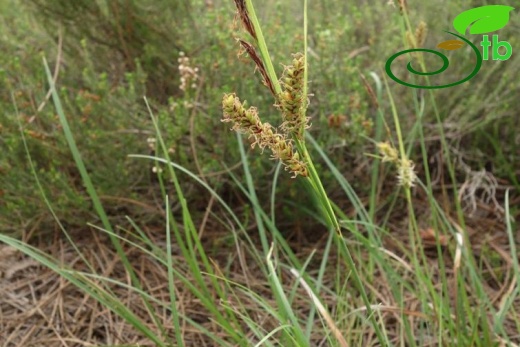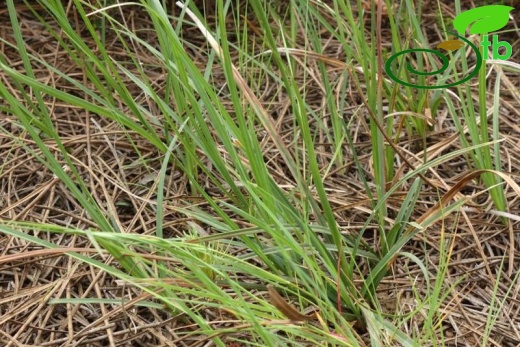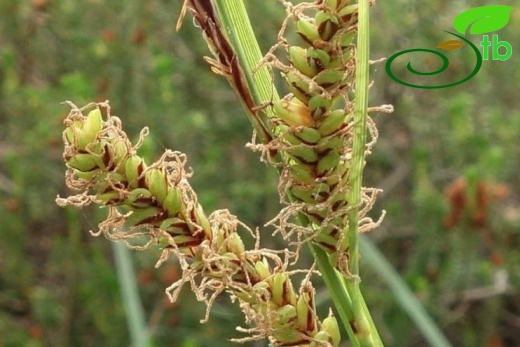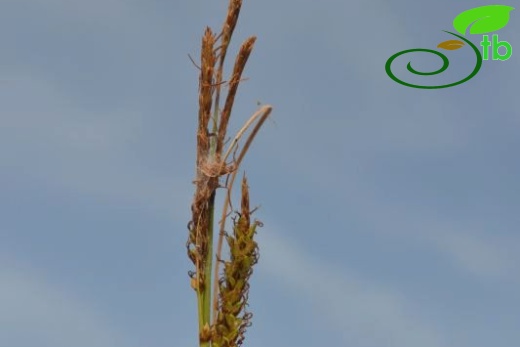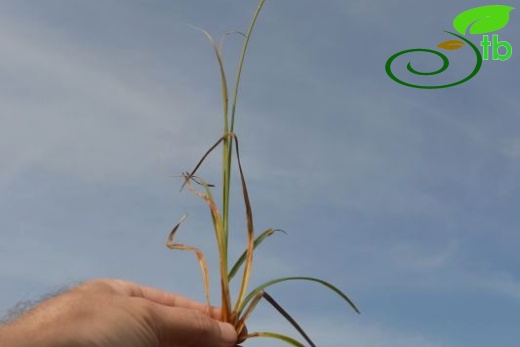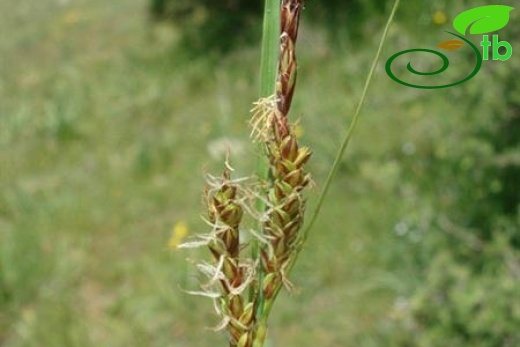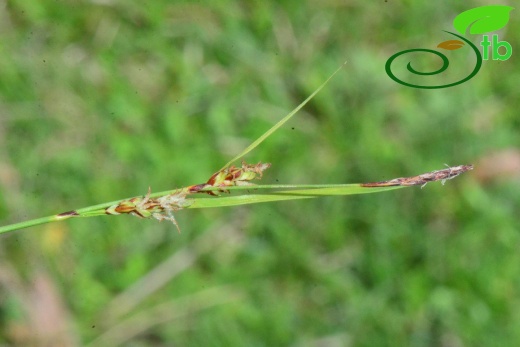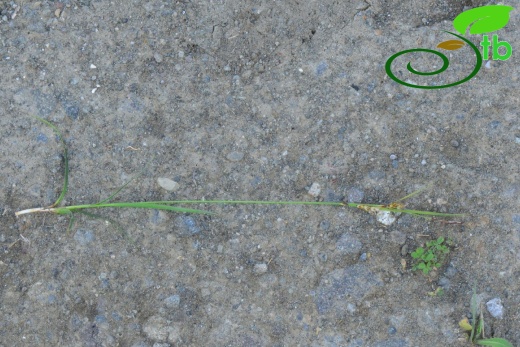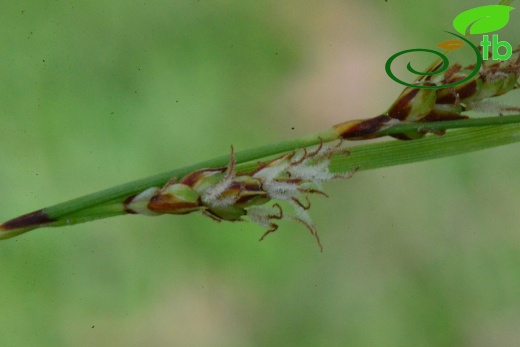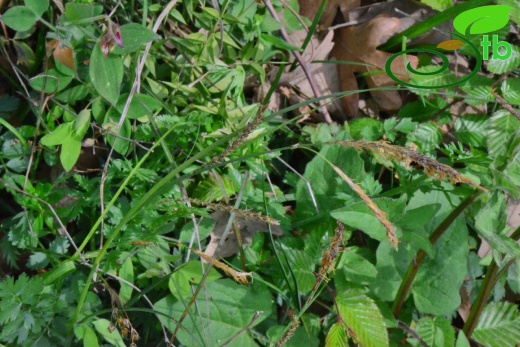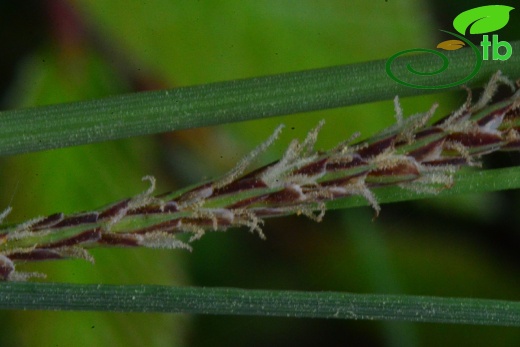Carex flacca
Carex flacca
Subsp erythrostachys: Yanık çayırsazı; Subsp flacca: Boz çayırsazı
Not or laxly caespitose; rhizomes long, far-creeping. Stems 10-70 cm, subterete to bluntly trigonous, usually smooth; basal sheaths purplish-brown or very dark brown, not fibrous. Leaves 1.5-6 mm broad, shorter than stems, rather rigid, glaucous beneath, dull green above, often curved, flat to channelled, margins often involute. Male spikes 1-3, approximate, terminal longest, 1.5-6.5 cm. Female spikes 1-4, 1.5-6.5 cm, rather distant but often overlapping, erect to pendent, dense to lax; peduncles to 3 em, often scabrid; low est bract equalling or exceeding inflorescence; sheath obsolete . Female glumes ovate, dark to pale reddish-brown with greenish-white median band. Utricles pale yellowish-green, often purple-spotted and turning dark purplish-black, obovoid to oblong-obovoid or broadly ellipsoid, 2-4.2 mm, minutely papillose, margins and adaxial surface sometimes scabridulous; beak to 0.3 mm, truncate or slightly emarginate, often dark purplish.
1. Stems often rather slender; female spikes usually dense at least above, often pedunculate and pendent ; female glumes often blackish-brown, acute to aristate, usually shorter than utricles, with 1 narrow midvein; utricles 2.2-3.3 mm, obovoid, often somewhat flattened, rounded above, patent to erecto-patent subsp. flacca
1. Stems usually rigid; female spikes rather lax, almost sessile, all ±erect; female glumes acute or with denticulate arista, c. as long as utricles or longer, reddish- brown with broad 3-veined mid-line;utricles broadly ellipsoid, 3.1-4.2 mm, ± terete, rather narrowed above, erecto-patent to erect subsp. serrulata , Crimea, Caucasia, NW., N., W. & S. Iran, Khorassan, N. Iraq, Syrian Desert, W. Syria, Cyprus, W. Pakistan, N. Africa. Medit. element. )
subsp. erythrostachys-Samsun
Ahmet Güngör
subsp. erythrostachys-Samsun
Ahmet Güngör
subsp. erythrostachys-Samsun
Ahmet Güngör
subsp. erythrostachys-Samsun
Ahmet Güngör
subsp. flacca- Samsun
Ahmet Güngör
subsp. flacca- Samsun
Ahmet Güngör


